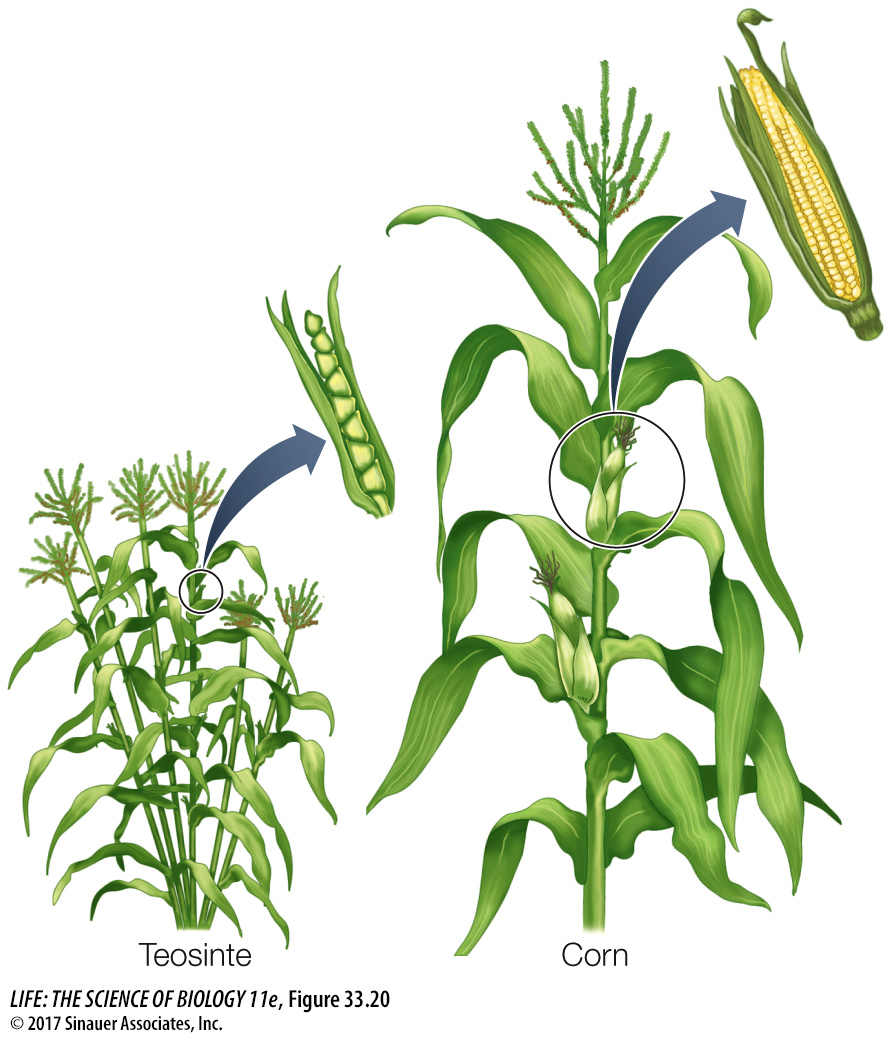key concept
33.4
Domestication Has Altered Plant Form
key concept
33.4
Domestication Has Altered Plant Form
You have seen in this chapter that a simple, modular plant body plan underlies the remarkable diversity of the flowering plants that cover our planet. Differences in plant form among species are not surprising, given the high levels of genetic diversity among plant species. However, members of the same species can also show remarkable diversity in form. From a genetic perspective, this suggests that minor differences in gene content or gene regulation can underlie dramatic differences in plant form.
focus your learning
Genetic variation in the structure of plants is a valuable natural resource for rop plant evolution.
It is hard to believe that modern corn was domesticated from the wild grass teosinte, which still grows in the hills of Mexico (Figure 33.20). One of the most conspicuous differences is that teosinte, like other wild grasses, is highly branched, whereas domesticated corn has a single shoot. This morphological difference is due in large part to the activity of a single gene called teosinte branched 1 (tb1). The protein product of tb1 regulates the growth of axillary buds (see Figure 33.1). The allele of tb1 in domesticated corn represses branching, whereas the allele in teosinte permits branching.

Even harder to believe is that a single species, *Brassica oleracea (wild mustard), is the ancestor of many familiar and morphologically diverse crops, including kale, broccoli, Brussels sprouts, and cabbage.
*connect the concepts The diversity of plants derived from wild mustard illustrated in Figure 20.5 demonstrates how artificial selection—
Each of these familiar vegetable crops has the same basic body plan. Starting with morphologically diverse populations of the wild ancestor, humans selected and planted the seeds of variants with traits they found desirable. For example, Brussels sprout plants were selected for their enlarged axillary buds, cabbage plants were selected for their enlarged terminal buds and short internodes, and broccoli and cauliflower plants were selected for their large clusters of flower buds. Many generations of such artificial selection produced the crops that fill the produce section of the supermarket and the stands of farmers’ markets.
Just as they were for ancient farmers, the genomes of plants are priceless resources today. The genetic variation in crop plants and their wild relatives can be used to improve our crop plants or adapt them to changing conditions. The improvement of crop plants is a work in progress that is being carried out in plant breeding programs worldwide. These programs are now more important than ever. Increased human activity is dramatically changing our planet and leading to the extinction of more and more plant species. For this reason, various organizations around the world have developed seed banks, where seeds of diverse species, and variants within species, are stored.